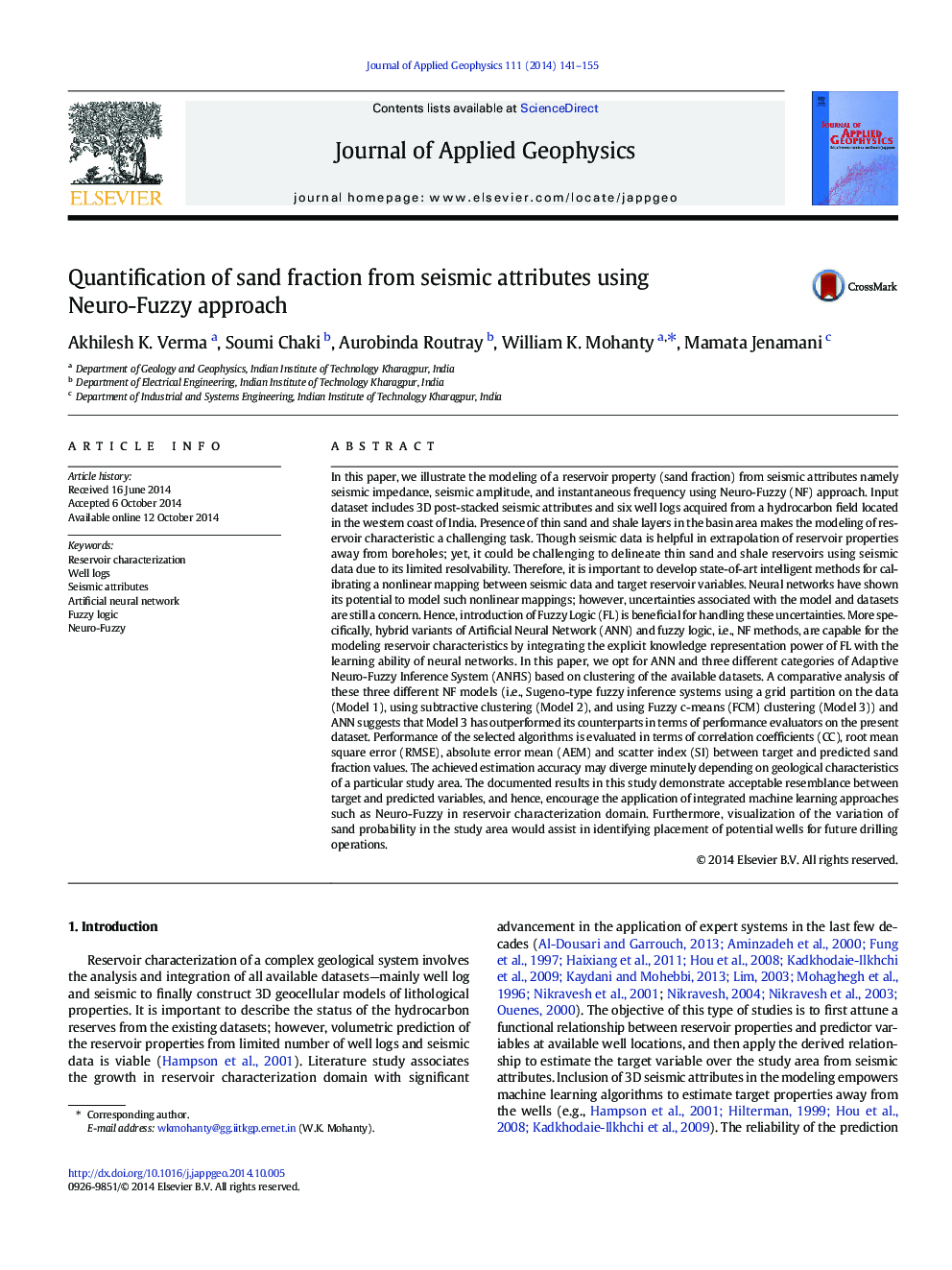| کد مقاله | کد نشریه | سال انتشار | مقاله انگلیسی | نسخه تمام متن |
|---|---|---|---|---|
| 4740098 | 1641140 | 2014 | 15 صفحه PDF | دانلود رایگان |
• Neuro-Fuzzy (NF) based modeling of sand fraction from seismic attributes
• A comparative analysis is reported between three categories of ANFIS and ANN.
• Performance of the selected algorithms is evaluated in terms of four evaluators.
• Sand fraction is modelled successfully.
In this paper, we illustrate the modeling of a reservoir property (sand fraction) from seismic attributes namely seismic impedance, seismic amplitude, and instantaneous frequency using Neuro-Fuzzy (NF) approach. Input dataset includes 3D post-stacked seismic attributes and six well logs acquired from a hydrocarbon field located in the western coast of India. Presence of thin sand and shale layers in the basin area makes the modeling of reservoir characteristic a challenging task. Though seismic data is helpful in extrapolation of reservoir properties away from boreholes; yet, it could be challenging to delineate thin sand and shale reservoirs using seismic data due to its limited resolvability. Therefore, it is important to develop state-of-art intelligent methods for calibrating a nonlinear mapping between seismic data and target reservoir variables. Neural networks have shown its potential to model such nonlinear mappings; however, uncertainties associated with the model and datasets are still a concern. Hence, introduction of Fuzzy Logic (FL) is beneficial for handling these uncertainties. More specifically, hybrid variants of Artificial Neural Network (ANN) and fuzzy logic, i.e., NF methods, are capable for the modeling reservoir characteristics by integrating the explicit knowledge representation power of FL with the learning ability of neural networks. In this paper, we opt for ANN and three different categories of Adaptive Neuro-Fuzzy Inference System (ANFIS) based on clustering of the available datasets. A comparative analysis of these three different NF models (i.e., Sugeno-type fuzzy inference systems using a grid partition on the data (Model 1), using subtractive clustering (Model 2), and using Fuzzy c-means (FCM) clustering (Model 3)) and ANN suggests that Model 3 has outperformed its counterparts in terms of performance evaluators on the present dataset. Performance of the selected algorithms is evaluated in terms of correlation coefficients (CC), root mean square error (RMSE), absolute error mean (AEM) and scatter index (SI) between target and predicted sand fraction values. The achieved estimation accuracy may diverge minutely depending on geological characteristics of a particular study area. The documented results in this study demonstrate acceptable resemblance between target and predicted variables, and hence, encourage the application of integrated machine learning approaches such as Neuro-Fuzzy in reservoir characterization domain. Furthermore, visualization of the variation of sand probability in the study area would assist in identifying placement of potential wells for future drilling operations.
Journal: Journal of Applied Geophysics - Volume 111, December 2014, Pages 141–155
